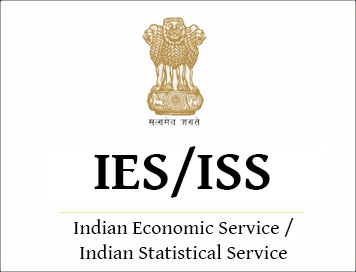(HOT) UPSC Current Affairs 2025 PDF
NEW! The Gist (NOV-2025) | E-BOOKS
UPSC IES-ISS Exam Papers 2018 : General Economics Paper - I,II & III

UPSC Indian Economic Service/Indian Statistical Service
Exam Name : UPSC Indian Economic Service/ Indian Statistical Service Exam
Subject : General Economics Paper I,II & III
Year : 2018
Question Paper Specific Instructions Please read each of the following instructions carefully before attempting questions :
- There are THIRTEEN questions divided under THREE sections...
- The ONLY question in Section A is compulsory.
- In Section B, FIVE out of SEVEN questions are to be attempted.
- In Section C, THREE out of FIVE questions are to be attempted.
- Candidates should attempt questions/parts as per the instructions given in the sections. The number of marks carried by a question/ part is indicated against it.
- Attempts of questions shall be counted in sequential order. Unless struck off, attempt of a question shall be counted even if attempted partly.
- Any page or portion of the page left blank in the Question-cum-Answer Booklet must be clearly struck off.
- Candidates are required to write clear, legible and concise answers and to adhere to word limits wherever indicated. Failure to adhere to word limits may be penalized.
- Answers must be written in ENGLISH only.
SECTION A
Q1. Answer all the following seven parts in about 100 words each : (5x7=35)
(a) Economic rent is not earned when the supply of a factor is perfectly elastic. Elucidate. Use a diagram.
(b) Show that the elasticity of substitution is constant in a Cobb-Douglas production function. Find its value and interpret.
(c) Consider the optimisation problem :
Maximize u(x1, x2)
subject to M = P1X1 + P2X2
where M, P1 and p2 are positive constants. Write down the Lagrangian for this problem and explain why you need to assume that an interior solution exists before using the Lagrangian method to solve the problem.
(d) An economy has 10 slave owners and 500 slaves. Slave owners like having slaves more than not having slaves, and slaves would rather be free than remain as slaves. Explain why the institution of slavery is Pareto optimal in this case.
(e) Explain with a diagram why the compensated demand curve is vertical if the consumer's utility function is of the form :
v(x, y) = min[x, y]
(f) Pharmacies often give senior citizens discounts on medicines. Explain why this may be profit maximizing behaviour as opposed to pure generosity on the part of the pharmacy owners.
(g) Suppose that the Government as a monopoly firm produces electricity and sells it to the people at a price p per unit. The demand (q) function for electricity is q = a p. If the price elasticity of demand for electricity in an absolute sense is found to be 0.894, should the Government reduce the price per unit to increase the revenue ? Justify your answer.
Click Here to Download Paper I
Click Here to Download Paper II
Click Here to Download Paper III
<< Go Back to Main Page
Courtesy: UPSC

